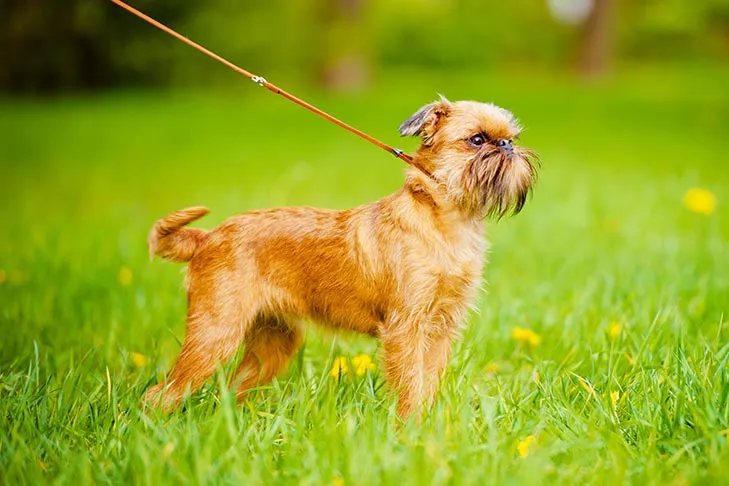Teaching your dog to reliably come when called, often referred to as recall, is arguably one of the most critical skills they can learn. It’s a fundamental command that ensures both their safety and your peace of mind. Dogs are naturally curious creatures, finding endless fascination in the world around them, which can make Training Your Dog To Come To You a significant challenge. Every time you issue the “come” cue, you’re asking your dog to disengage from whatever captivating stimulus they’re focused on and return to you. To build a truly dependable recall, our goal is to show our dogs that returning to our side is the most rewarding and enjoyable activity they could possibly do.
Understanding Reliable Recall: The Foundation of Safety
“Reliable recall” signifies a level of confidence where you are almost entirely certain your dog will respond enthusiastically when you call them. While no dog is a robot, and absolute certainty is impossible, the aim for a lifesaving skill like recall is to achieve the highest possible level of consistency. This reliability becomes especially crucial if you plan to let your dog enjoy off-leash freedom in open spaces, outside of secure, fenced areas or dedicated dog parks. Furthermore, a strong recall is an indispensable asset during unexpected emergencies, allowing you to quickly secure your pet. For those interested in a comprehensive approach to foundational behaviors, exploring 5 essential dog commands can provide a great starting point for diverse training objectives.
Safe Alternatives for Off-Leash Freedom
If you’re not fully confident in your dog’s recall abilities, there’s absolutely no need to feel pressured to allow them off-leash. Prioritizing their safety is paramount. Instead, consider giving your dog more opportunities for exploration and exercise in securely fenced environments. Another excellent option is to use a long leash. This allows your dog a greater range of movement and the chance to sniff and explore more extensively, all while remaining safely connected to you.
 Brussels Griffon dog calmly walking on a leash in a grassy park, demonstrating safe on-leash exploration during dog recall training.
Brussels Griffon dog calmly walking on a leash in a grassy park, demonstrating safe on-leash exploration during dog recall training.
It’s also vital to always adhere to local leash laws, regardless of how robust your dog’s recall is. This applies even to your front yard or any unfenced area on your property. Many local, state, and national parks also have strict regulations regarding leashing, which must always be respected.
Starting Your Recall Training Journey
An effective way to begin training your dog to come to you is to transform the learning process into a fun game. Always start in a calm, low-distraction environment, such as inside your home. Begin by showing your dog an enticing dog toy or a delicious, high-value treat. As they start to move towards you, offer verbal praise. Once they reach you, make sure to immediately reward them. After a few repetitions where your dog reliably moves towards you, you can introduce your chosen verbal cue (e.g., “come,” “here,” “kome”). It’s crucial to only add the cue when you are confident your dog is already heading in your direction. This helps them associate the word with the action of coming to you. You can gradually increase the difficulty by asking your dog to come before you show them the treat, ensuring you still deliver that high-value reward like chicken, cheese, or beef liver when they arrive. Also, slowly increase the distance between you and your dog within the low-distraction setting. Understanding the best order for dog commands can also help integrate recall into a broader training curriculum.
Engaging Games to Master “Come!”
Transforming recall practice into games makes training your dog to come to you far more enjoyable and effective.
- Catch Me: While walking your dog on a leash, get their attention. Then, turn around and take a few quick steps backward, running away from them. As your pup moves with you, enthusiastically say “Come!” or your chosen verbal recall cue. After a few steps, stop and reward them with a favorite treat or toy. Always ensure your dog is attentive before you run to prevent any sudden tugs on the leash.
- Find Me: Once your dog has grasped the basic concept of recall, you can introduce an element of speed and challenge by calling them from another room. When your dog successfully finds you, shower them with abundant praise and rewards. This hide-and-seek style game is a fantastic way to bond and build excitement for coming to you.
- Hot Potato: Gather two or more family members or friends, each equipped with high-value treats. Stand a fair distance apart and take turns calling your dog between you. Reward your dog generously each time they come to the person who called their name.
A common but detrimental training mistake is to recall your dog, immediately put them on a leash, and then head straight home. Dogs are smart and will quickly learn to associate recall with the abrupt end of their fun, making them less likely to respond in the future. A better practice method is to recall, praise, reward, and then immediately release your dog to go back to what they were doing before. This reinforces the idea that coming to you leads to good things, not the end of playtime. Learning easy dog tricks for puppies can also help build a positive association with learning and responding to cues.
Avoiding the “Poisoned Cue” Trap
“Come! Come! Come! Come! Come! Please come!”
If this frantic repetition sounds familiar when you’re trying to call your dog, you might have inadvertently created a “poisoned cue.” This often happens without malicious intent, occurring when a verbal cue either becomes unclear in its meaning or develops a negative association for the dog, causing them to ignore it. The easiest way to poison a cue is through overuse, repeating the word endlessly without your dog responding. For handlers who use specific foreign language commands, understanding nuances like German dog training commands can also be important in ensuring consistency and avoiding confusion.
 Energetic Cocker Spaniel running freely in a lush green backyard, illustrating a dog potentially ignoring a 'poisoned cue' during recall practice.
Energetic Cocker Spaniel running freely in a lush green backyard, illustrating a dog potentially ignoring a 'poisoned cue' during recall practice.
When a cue has become poisoned, the most effective solution is to change your verbal cue entirely. For instance, if you previously used “come,” switch to a new word like “here” or “close.” Then, go back to the very basics, starting the introduction of your new recall cue in a low-distraction environment, as if you were teaching it for the first time. This fresh start helps your dog form a positive, clear association with the new command.
Advanced Tips for a Stronger Recall
To solidify your dog’s ability in training your dog to come to you, keep these essential tips in mind:
- Avoid Repeating Yourself: If you find yourself repeatedly saying your recall cue without a response, it’s a clear sign that the environment is likely too distracting for your dog at their current training level, or they don’t fully understand the skill in that context. Step back to an easier setting.
- Reward Eye Contact: When you notice your dog looking at you or voluntarily coming close, offer immediate verbal praise and a treat. While you might use a lot of treats initially, you are reinforcing a crucial lesson: when your dog is near you and attentive, wonderful things happen.
- Never Punish for Coming: Even if your dog took their sweet time responding, always praise and reward them for eventually coming. Punishing them will create a negative association with returning to you, undermining all your hard work.
- High-Value Rewards Are Key: Especially during the learning phase, always use high-value treats and favorite toys when practicing recall. You want your dog to associate coming to you with receiving something truly fantastic, making it a highly anticipated event.
- Practice Daily: Incorporate recall practice into your daily routine, gradually increasing the level of distraction and distance. Moving too quickly through these stages can confuse your dog and lead to decreased reliability.
- Emergency Recall – Don’t Chase: In a real emergency, if your dog is running away, resist the urge to chase them. This often turns it into a game for the dog, encouraging them to run further. Instead, try running away from your dog, making exciting noises, to inspire them to chase after you. This taps into their natural prey drive and encourages them to close the distance.
Mastering the “come” command is an ongoing journey that requires patience, consistency, and positive reinforcement. By following these guidelines and making the training process enjoyable, you’ll empower your dog with a life-saving skill and strengthen the bond you share.
